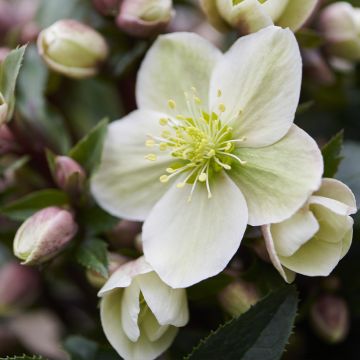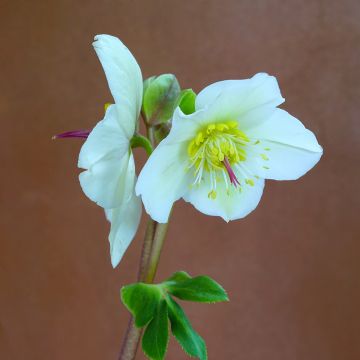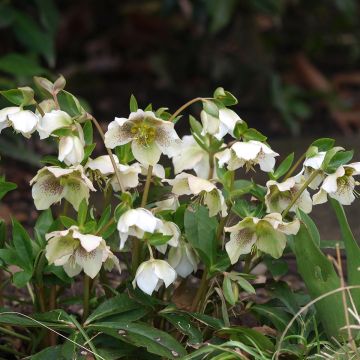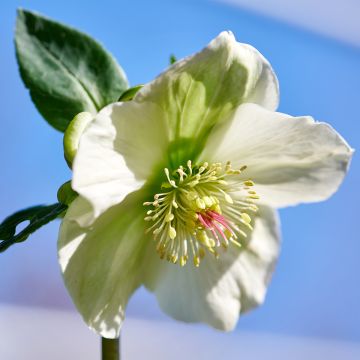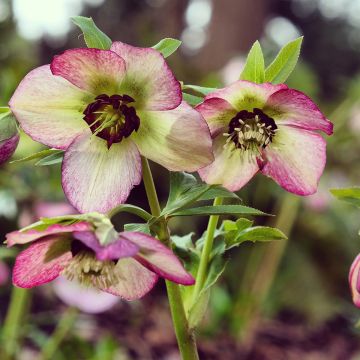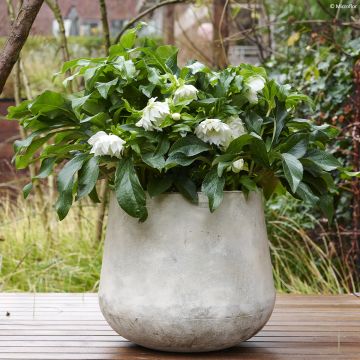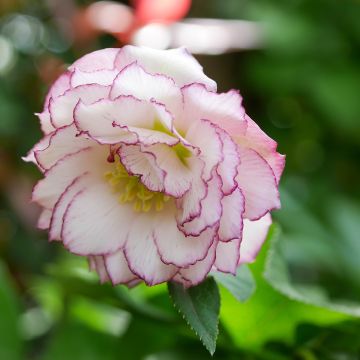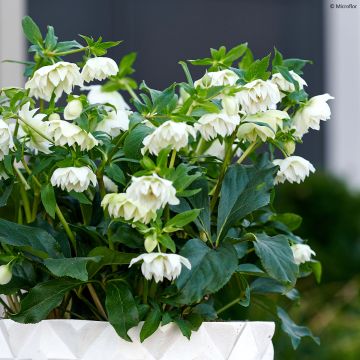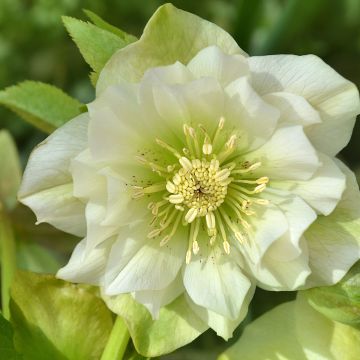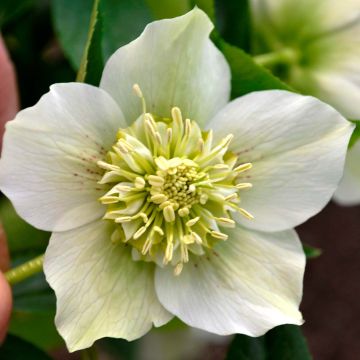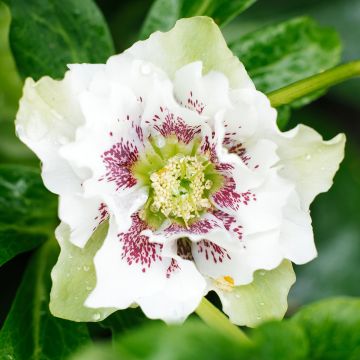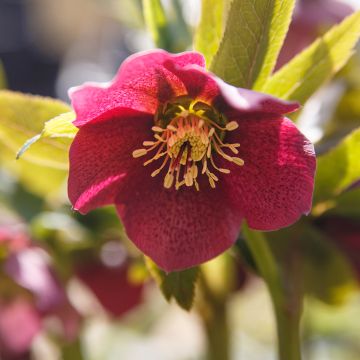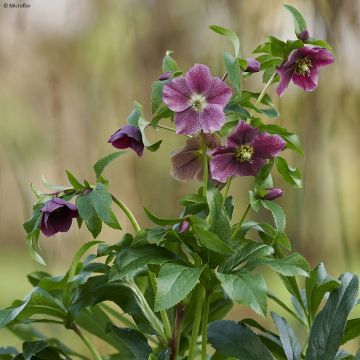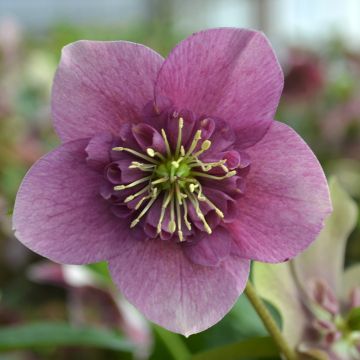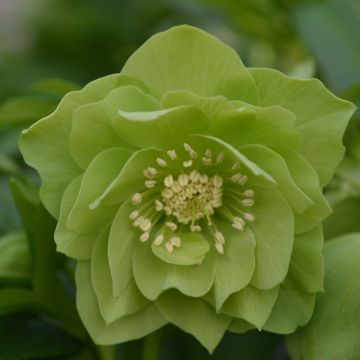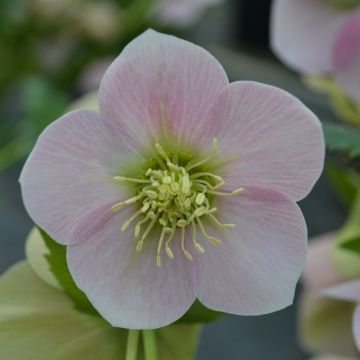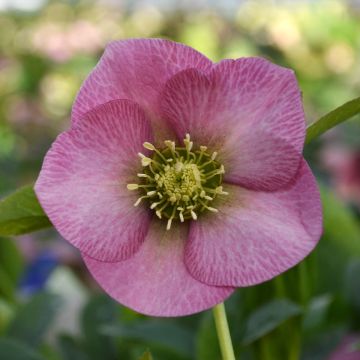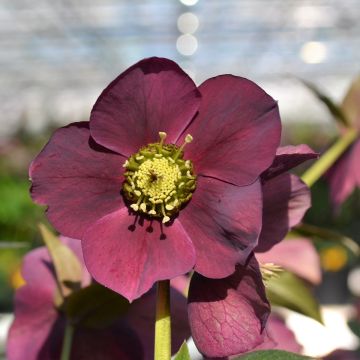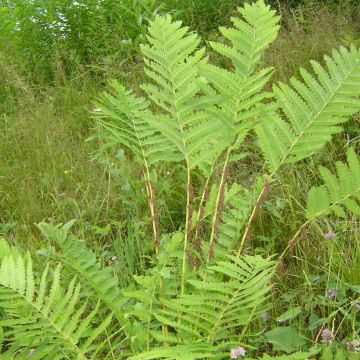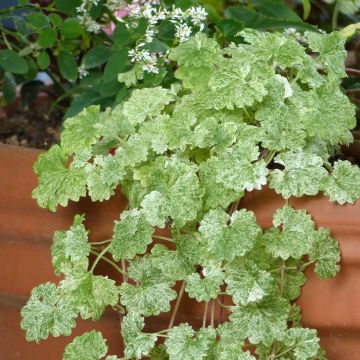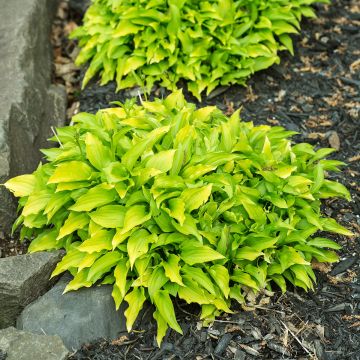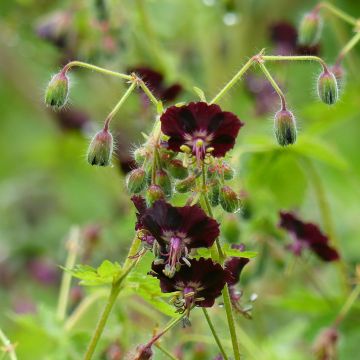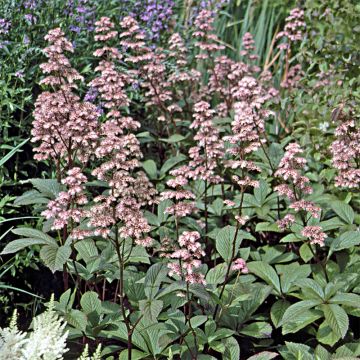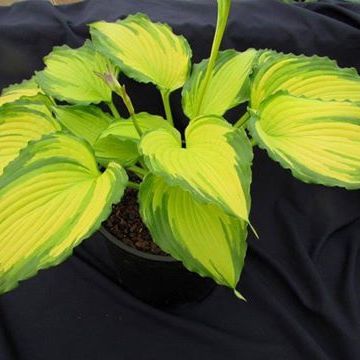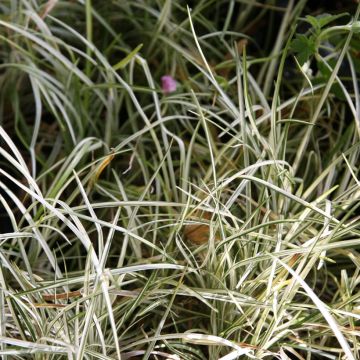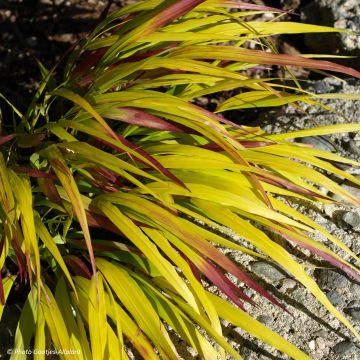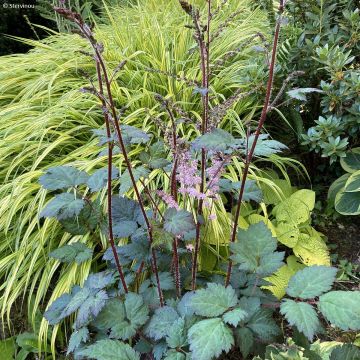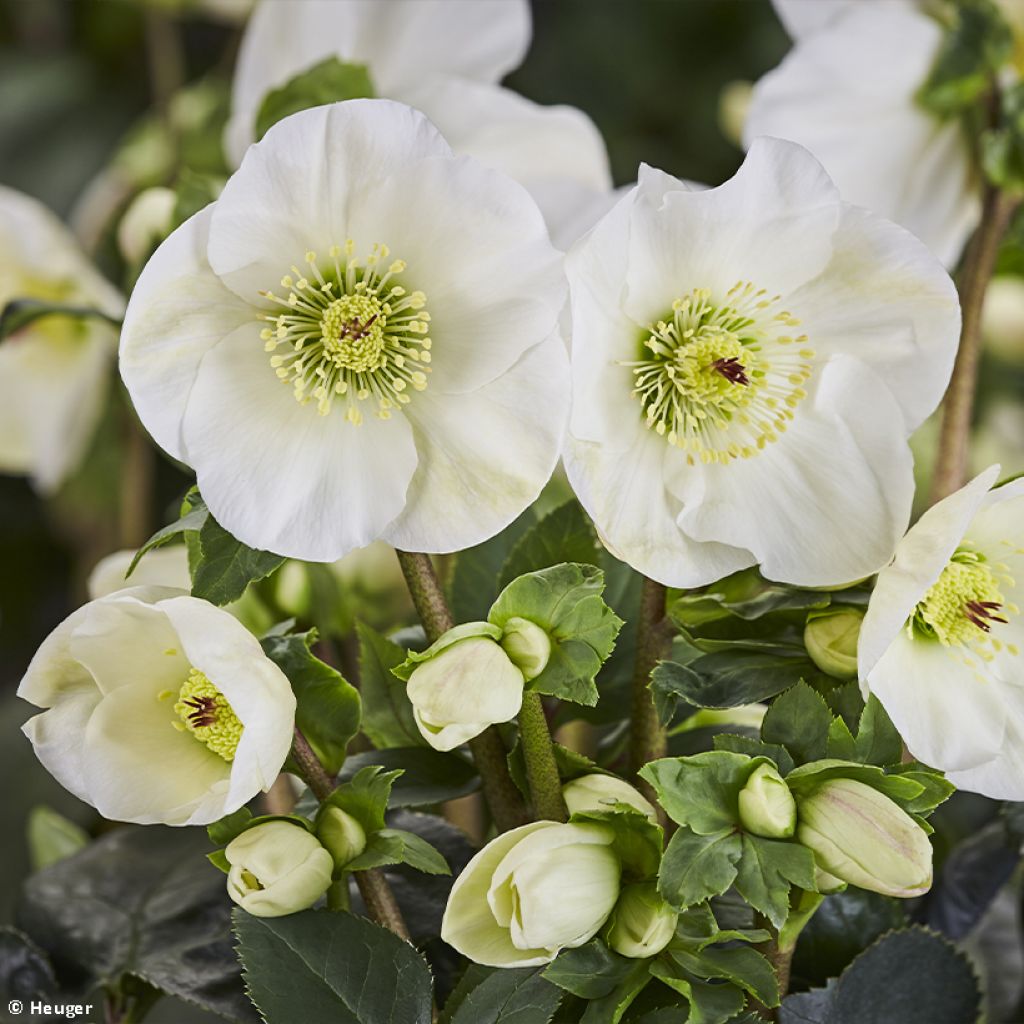

Hellébore lemperii Linn
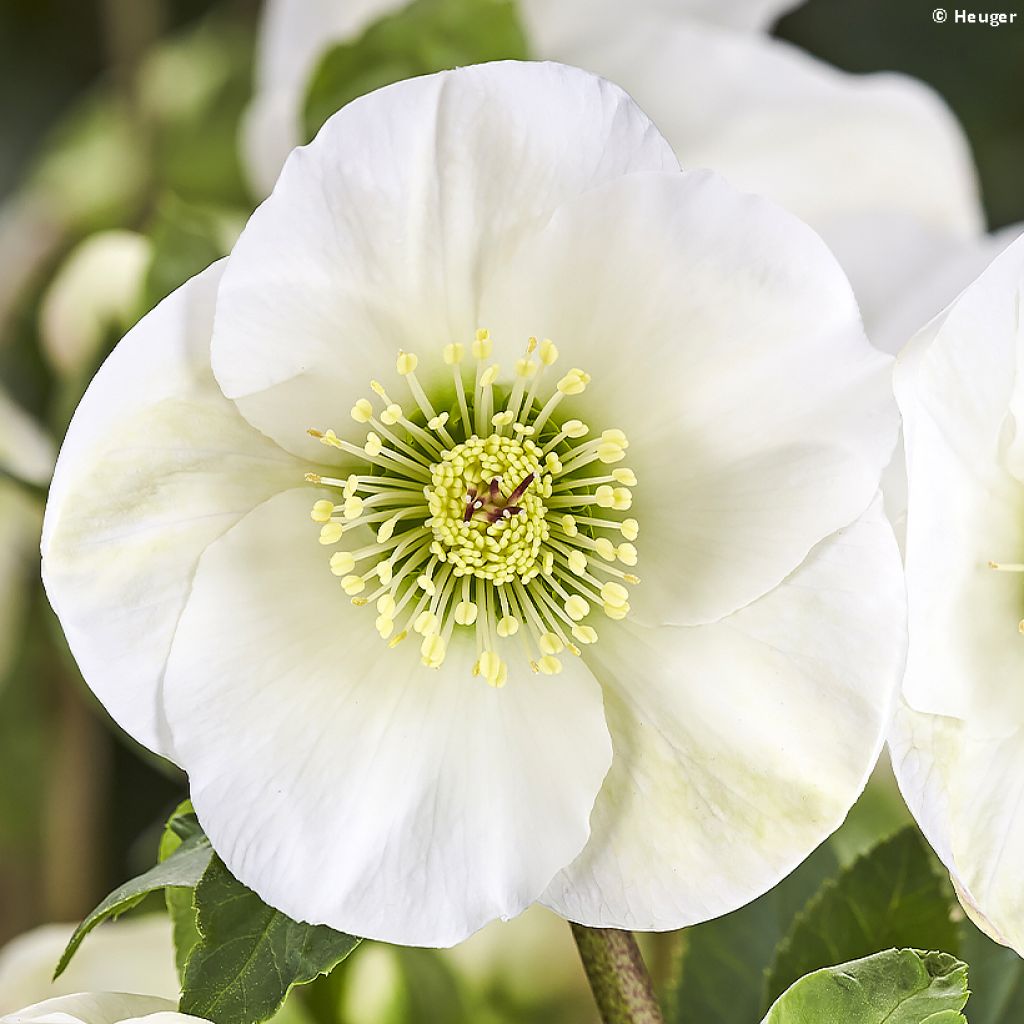

Hellébore lemperii Linn
Helleborus HGC Linn
Helleborus x lemperii HGC® Linn
Christmas Rose, Hybrid Hellebore
Hellebore with truly large pure white flowers.
MaDo, 06/02/2024
Why not try an alternative variety in stock?
View all →This plant carries a 12 months recovery warranty
More information
We guarantee the quality of our plants for a full growing cycle, and will replace at our expense any plant that fails to recover under normal climatic and planting conditions.
From €5.90 for pickup delivery and €6.90 for home delivery
Express home delivery from €8.90.

Does this plant fit my garden?
Set up your Plantfit profile →
Description
Helleborus HGC Linn is a superb recent creation from the unlikely alliance between the Christmas rose, Helleborus niger, and the Lenten rose, Helleborus orientalis. It combines the qualities of its parents with a fantastic 5-month flowering period from autumn to spring. Its large and luscious flowers are very bright creamy white. This hardy and very robust perennial can be grown in borders, under bushes, or in pots. Easy to grow in all regions, even in heavy and chalky soil, it thrives in shade or non-burning sun. Its flowers are beautiful and precious in winter bouquets.
Hybridization between Helleborus niger and Helleborus orientalis seemed impossible until now. However, this crossbreeding was successfully carried out at the Jardins de Bellevue in Beaumont-le-Hareng, Normandy, by Martine and Lucie Lemonnier. Since this first success, other cultivars have appeared including Helleborus HGC Linn, a perennial herbaceous plant with evergreen foliage, belonging to the Ranunculaceae family. This variety forms a clump 50 to 60 cm (20 to 24in) tall spreading a minimum of 50 cm (20in) and stands out for its long continuous flowering period, from November to April. Its abundant flowers proudly stand above beautiful glossy foliage, showing a green heart with yellow stamens. They measure more than 15 cm (6in) in diameter and are composed of 5 rounded petals arranged in an open cup. The foliage consists of evergreen, palmate, slightly toothed, dark green and shiny basal leaves, 30 to 40 cm (12 to 16in) long, composed of 7 to 9 leaflets. They only live for 8 months and are regularly replaced by new leaves. Hellebore does not like to be moved once established and young plants take a little time to flower. The seeds are sown by ants.
Use Hellebores like elements of an ancient tapestry, mixing them with woodland plants in brighter colours. They are highlighted when planted near Pieris, small-sized rhododendrons and under conifers (especially on wind-exposed sites). Surround them with primroses, Wood Anemones, Corydalis, Dicentras, Cardamines, or spring-flowering bulbs, and Snowdrops. You can also plant them with Ferns and shade-loving irises to create a beautiful contrast a little later in the season. They can be planted in groups near the entrance of the house, in shaded areas, to enjoy their early flowering up close. They are suitable as cut flowers and in borders, beds, or containers... Over time, the flowers of the Hellebore do not wither like the majority of other flowers, but dry up instead.
Report an error about the product description
Helleborus HGC Linn in pictures


Flowering
Foliage
Plant habit
Botanical data
Helleborus
x lemperii
HGC® Linn
Ranunculaceae
Christmas Rose, Hybrid Hellebore
Cultivar or hybrid
Other Oriental Hellebore
Planting and care
Hellebore grows in any deep, rich, light, clayey or limestone soil, in partial or light shade, sheltered from cold and prevailing winds. Avoid direct sunlight during the hottest hours in the south. Plant from early autumn to spring, between February and April. It thrives in deeply dug soil mixed with organic matter. To feed, use bone meal or other organic fertilizer. Water well after planting and add a layer of mulch 2 to 5 cm (1 to 2in) thick. Regularly remove faded leaves to improve flowering. Maintain a planting distance of 30 to 40 cm (12 to 16in) between each plant to promote their development. Hellebore does not like stagnant water, as it may cause it to rot.
The roots should not completely dry out during summer. Hellebores can be affected by a fungal disease transmitted by aphids, called black spot. Remove old leaves from deciduous species or spotted leaves from evergreen species when flower buds appear. Remove faded flowers after seeding. They can also suffer from grey rot or die from collar rot due to poor growing conditions, in excessively wet situations.
On a balcony or terrace, plant them in pots 4 to 5 times larger than their size, as they need space to develop their root system. Most Hellebores can withstand temperatures down to -15°C (5°F) without suffering, allowing them to adapt to almost all regions. Hellebores are undemanding plants that can live for many years without requiring much care.
Planting period
Intended location
Care
-
, onOrder confirmed
Reply from on Promesse de fleurs
Shade-loving perennials
Haven't found what you were looking for?
Hardiness is the lowest winter temperature a plant can endure without suffering serious damage or even dying. However, hardiness is affected by location (a sheltered area, such as a patio), protection (winter cover) and soil type (hardiness is improved by well-drained soil).

Photo Sharing Terms & Conditions
In order to encourage gardeners to interact and share their experiences, Promesse de fleurs offers various media enabling content to be uploaded onto its Site - in particular via the ‘Photo sharing’ module.
The User agrees to refrain from:
- Posting any content that is illegal, prejudicial, insulting, racist, inciteful to hatred, revisionist, contrary to public decency, that infringes on privacy or on the privacy rights of third parties, in particular the publicity rights of persons and goods, intellectual property rights, or the right to privacy.
- Submitting content on behalf of a third party;
- Impersonate the identity of a third party and/or publish any personal information about a third party;
In general, the User undertakes to refrain from any unethical behaviour.
All Content (in particular text, comments, files, images, photos, videos, creative works, etc.), which may be subject to property or intellectual property rights, image or other private rights, shall remain the property of the User, subject to the limited rights granted by the terms of the licence granted by Promesse de fleurs as stated below. Users are at liberty to publish or not to publish such Content on the Site, notably via the ‘Photo Sharing’ facility, and accept that this Content shall be made public and freely accessible, notably on the Internet.
Users further acknowledge, undertake to have ,and guarantee that they hold all necessary rights and permissions to publish such material on the Site, in particular with regard to the legislation in force pertaining to any privacy, property, intellectual property, image, or contractual rights, or rights of any other nature. By publishing such Content on the Site, Users acknowledge accepting full liability as publishers of the Content within the meaning of the law, and grant Promesse de fleurs, free of charge, an inclusive, worldwide licence for the said Content for the entire duration of its publication, including all reproduction, representation, up/downloading, displaying, performing, transmission, and storage rights.
Users also grant permission for their name to be linked to the Content and accept that this link may not always be made available.
By engaging in posting material, Users consent to their Content becoming automatically accessible on the Internet, in particular on other sites and/or blogs and/or web pages of the Promesse de fleurs site, including in particular social pages and the Promesse de fleurs catalogue.
Users may secure the removal of entrusted content free of charge by issuing a simple request via our contact form.
The flowering period indicated on our website applies to countries and regions located in USDA zone 8 (France, the United Kingdom, Ireland, the Netherlands, etc.)
It will vary according to where you live:
- In zones 9 to 10 (Italy, Spain, Greece, etc.), flowering will occur about 2 to 4 weeks earlier.
- In zones 6 to 7 (Germany, Poland, Slovenia, and lower mountainous regions), flowering will be delayed by 2 to 3 weeks.
- In zone 5 (Central Europe, Scandinavia), blooming will be delayed by 3 to 5 weeks.
In temperate climates, pruning of spring-flowering shrubs (forsythia, spireas, etc.) should be done just after flowering.
Pruning of summer-flowering shrubs (Indian Lilac, Perovskia, etc.) can be done in winter or spring.
In cold regions as well as with frost-sensitive plants, avoid pruning too early when severe frosts may still occur.
The planting period indicated on our website applies to countries and regions located in USDA zone 8 (France, United Kingdom, Ireland, Netherlands).
It will vary according to where you live:
- In Mediterranean zones (Marseille, Madrid, Milan, etc.), autumn and winter are the best planting periods.
- In continental zones (Strasbourg, Munich, Vienna, etc.), delay planting by 2 to 3 weeks in spring and bring it forward by 2 to 4 weeks in autumn.
- In mountainous regions (the Alps, Pyrenees, Carpathians, etc.), it is best to plant in late spring (May-June) or late summer (August-September).
The harvesting period indicated on our website applies to countries and regions in USDA zone 8 (France, England, Ireland, the Netherlands).
In colder areas (Scandinavia, Poland, Austria...) fruit and vegetable harvests are likely to be delayed by 3-4 weeks.
In warmer areas (Italy, Spain, Greece, etc.), harvesting will probably take place earlier, depending on weather conditions.
The sowing periods indicated on our website apply to countries and regions within USDA Zone 8 (France, UK, Ireland, Netherlands).
In colder areas (Scandinavia, Poland, Austria...), delay any outdoor sowing by 3-4 weeks, or sow under glass.
In warmer climes (Italy, Spain, Greece, etc.), bring outdoor sowing forward by a few weeks.

































